Leave No Trace – Stop building cairns / inukshuks
Has the wilderness for many people just become a unique place to take a quick selfie before rushing back to the latte shop to post the image to Facebook? Is that “wilderness experience” even better when you’ve left your mark by building cairns?
Or is having respect for incredible places that Mother Nature has created, or even letting other people enjoy unspoiled views in such places, now just an old-fashioned concept?
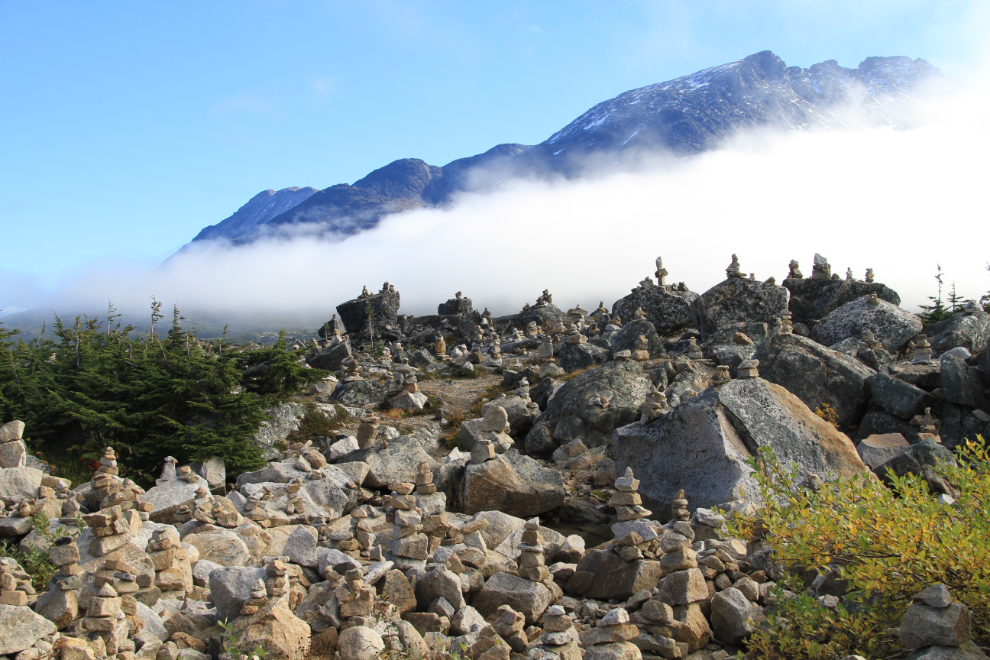
In what’s becoming known as “The Age of Entitlement”, perhaps we need to look back a few years, even to the late 1970s when “Leave No Trace” and similar outdoors-related ethics became well known and were commonly practised. Even in 4-wheel-drive vehicle advertising, “Tread Lightly” policies were widely followed in the late ’70s and early ’80s. Today, 4×4 ads once more show the earth being torn up, painted graffiti is common around the world – we even found it in parks in New Zealand – and in natural and even wilderness areas, buildings cairns is often the “I’ll do whatever I want” equivalent.
In Canada, these rock piles are often called “inukshuks” as many try to replicate the Inuit (and other Arctic peoples’) cairns shaped like people and commonly known by that name. An inukshuk in the form of a human being, though, is actually called an inunnguaq. The Inuit were not the only people that related their cairns to people. In German, a cairn is known as a “steinmann” (“stone man”), and in the Italian Alps, they are known as “ometto” or “small man”.
Regulations on Public Lands
Building cairns has become such a popular activity that Parks Canada, the National Park Service, and the Bureau of Land Management (BLM) all have regulations or policies that discourage or prohibit it. Many other park systems around the world are also adopting similar policies. While there are differences, the regulations for Canada’s Auyuittuq National Park are typical except for the request to not disturb any you find.
Do not build cairns, other markers, or leave messages in the dirt. Such markers detract from other visitors’ sense of discovery and wilderness experience. They can also be misleading and potentially dangerous. For example, a cairn marking a good river crossing one day may mark a deadly crossing place when the river changes its course or flow, which rivers here do regularly. Do not disturb or destroy any cairns that you do find. Some are of great historical significance.
At the Jasper SkyTram in Jasper National Park, Alberta, signs at the start of the trail to Whistler’s Mountain beyond the upper tramway station ask hikers to not build cairns. Despite that, there are many near the summit. The route near the summit is lined with rocks in a garden-path sort of way, and to add injury to insult, most of the cairns have been built using those rocks.
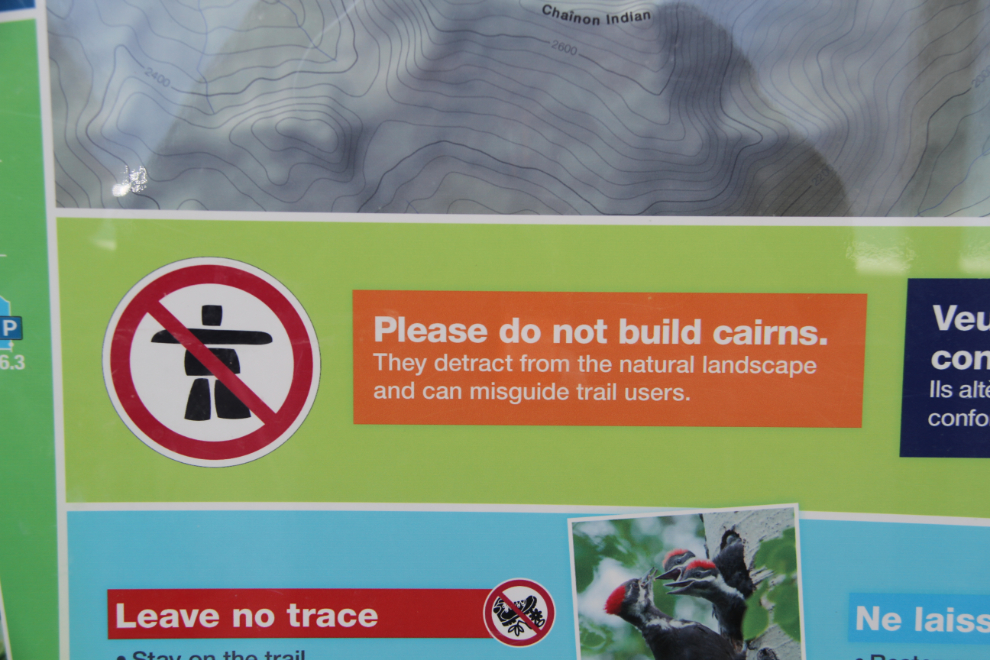
Signs at the Athabasca Glacier in the Columbia Icefield Area, also Jasper National Park, make the acceptability of cairns even more clear. DON’T build cairns, and DO kick over any you see. Unlike the situation in Auyuittuq National Park, there are no historic cairns here.
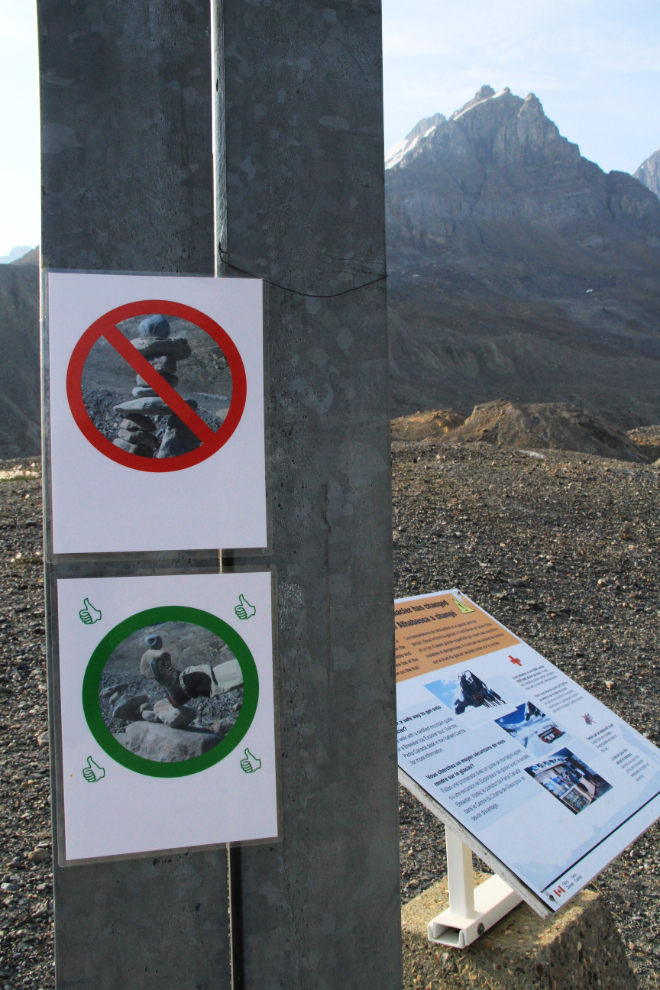
Social media has started to become one of the educational tools used by parks. The comments on such posts often show the sort of attitudes that make trying to educate people a frustrating process. See the Zion National Park Facebook page for a discussion that currently has over 2,400 comments with some very strong opinions both pro and con!
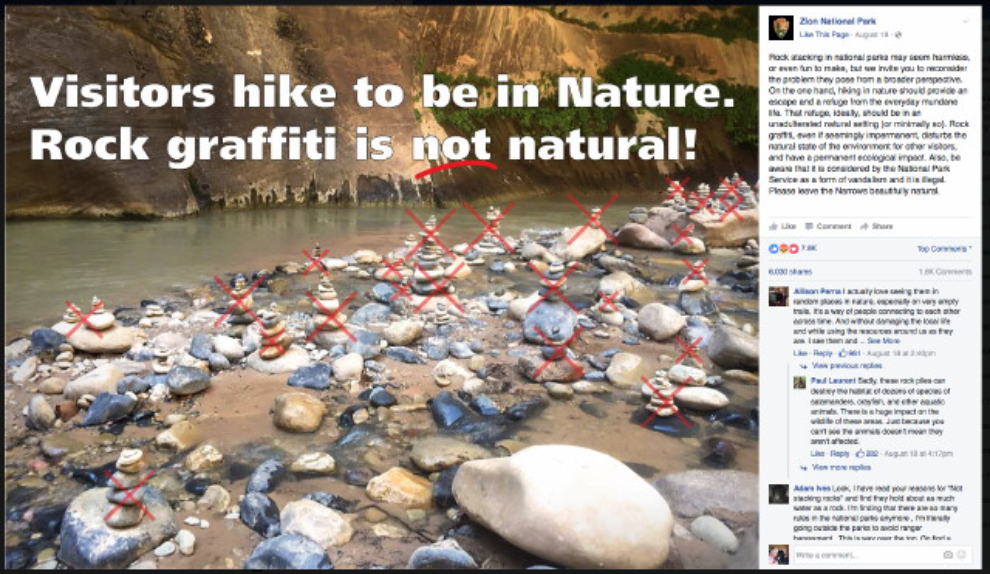
The long-abandoned Myra Canyon section of the Kettle Valley Railway, located in Myra-Bellevue Provincial Park and Protected Area near Kelowna, BC, has one of the largest collections of cairns I’ve seen yet. BC Parks doesn’t seem to have a policy on visitors building cairns yet.
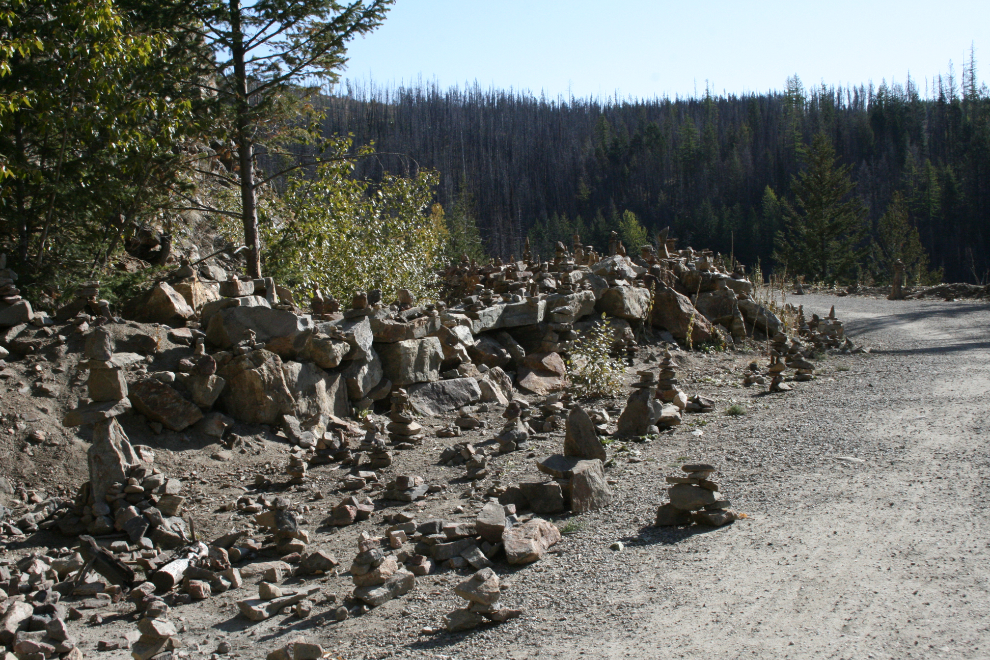
The Two Sides in Alaska/Yukon Tourism
Along the South Klondike Highway north of Skagway, cruise ship passengers are clearly the most prolific builders of cairns. Tour bus drivers can and do play a large part in either encouraging or discouraging the activity. On the “discouraging” side, Sherry Corrington offers The ‘Inukshuks Suck’ Tour: “Your driver escorts you up the Klondike Highway to a 7 mile stretch past the White Pass summit to knock down as many stacked rocks and Inukshuks you can possibly destroy in a minimum of 4 hours.”
Another Skagway tour operator, Dyea Dave, encourages his passengers to build them, even on his Web site: “You will have a chance to build your own “Inukshuk” to leave a part of yourself in the mountains.” The implication from this TripAdvisor page is that Frontier Excursions has a similar attitude to Dave.
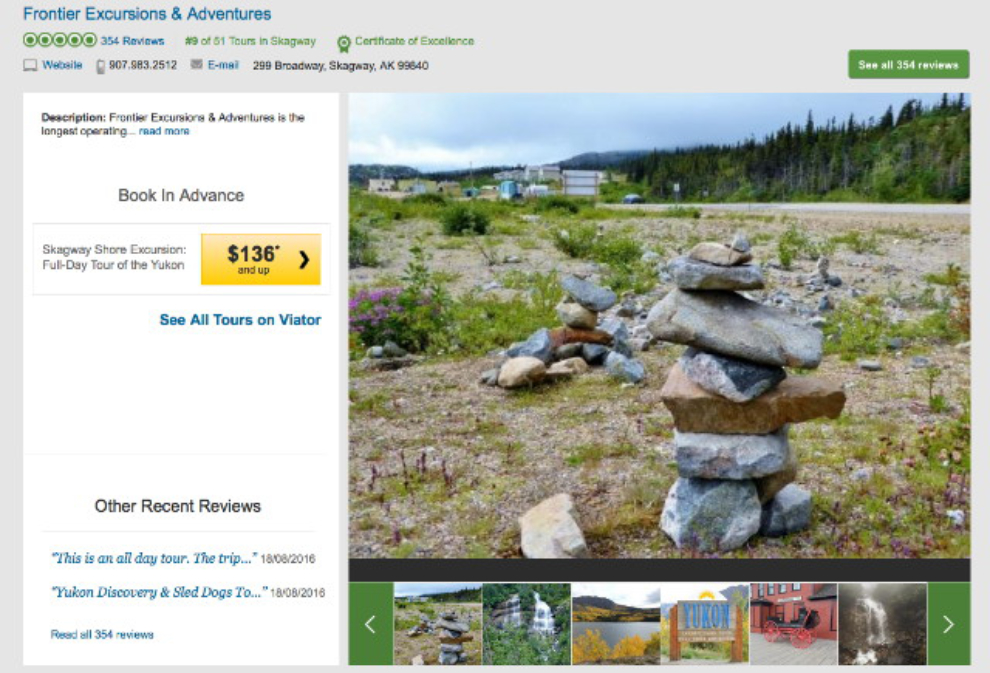
Summit Creek
Located on the South Klondike Highway 29 km (18 mi) north of Skagway, a large pullout at Summit Creek is one of the major stops for most bus and van tours for cruise ship passengers. With a large supply of both blasted and natural pieces of granite of all sizes, that also makes it the most popular place I’ve seen in the North for building cairns. As I drive and camp along the highway a lot, keeping Summit Creek cairn-free has become an activity that I spend a fair bit of time at now that I’m retired.
The first photo, which I also used to introduce this post, was shot in 2012 when building cairns at Summit Creek peaked, with little or no backlash from those of us who object.

I first became very vocal about my objections to cairns as part of raising hell about painted graffiti that appeared at Summit Creek in late June of 2015. A brief article at CBC North used to have dozens of comments, but a new policy on comments resulted in them all being deleted. The story also prompted a wonderful cartoon by Wyatt in the Yukon News, and generated a great deal of controversy, with a large number of emails and Facebook messages sent my way, many of them nasty. A couple of weeks after I met with a couple of people who work with Yukon Justice in restorative justice, however, the graffiti disappeared. I don’t know for sure who did the cleanup, but it took a great deal of work.
I’ve spent a lot of time RV-camping in the White Pass this summer, and the next two photos show the before and after of building cairns and cleaning up the mess a few weeks ago. Cathy was watching from the RV a couple of hundred yards away and said that all she could see of the activity was rocks flying through the air. I’ve found that just toppling the cairns is only a minor disruption of the building of them, but if the rocks are tossed into a nearby hollow that becomes a pond in the Spring, the effort of getting them up to a high point stops a lot of the re-building.
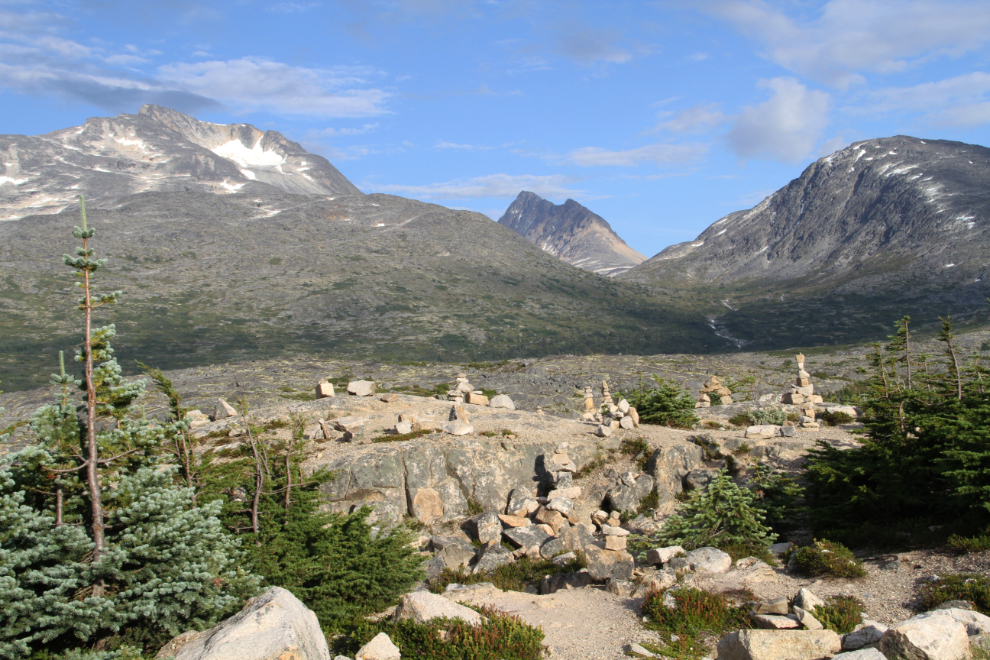
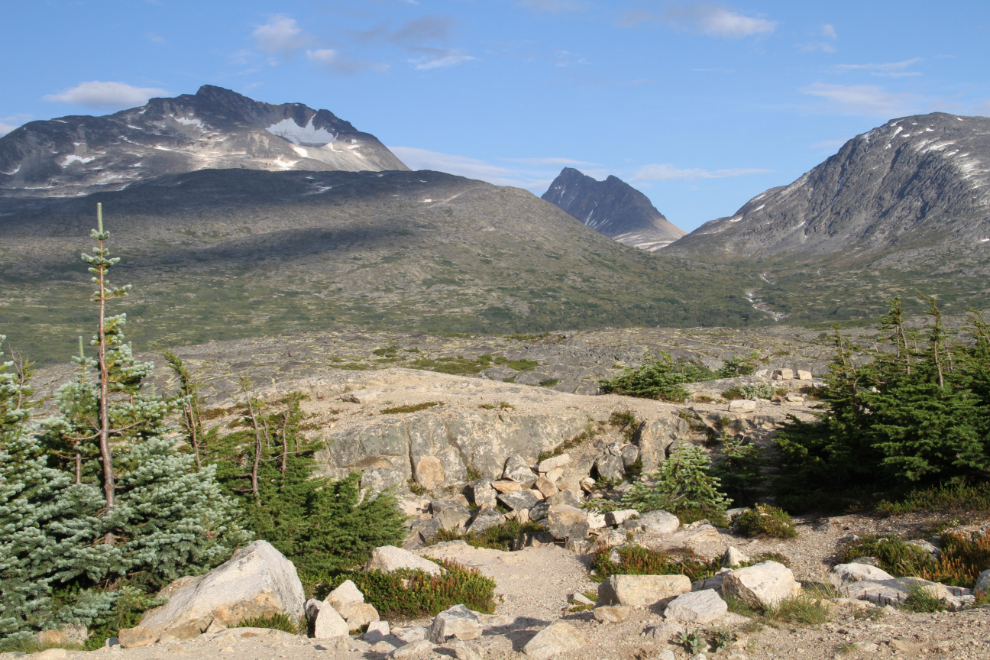
Below are links to other articles about building cairns – first the cons (don’t build cairns), and then the pros (have fun building cairns). The comments on some of those articles are as interesting as the articles themselves.
The Cons (Don’t Build Cairns)
In “Making Mountains Out Of Trail Markers?“, Robyn Martin, a lecturer focusing on ecological oral histories at Northern Arizona University, says “Yes, I have knocked a few down, sure,” adding that she considers the cairns to be “pointless reminders of human ego.”
In Robyn Martin’s essay Stop the rock-stacking, she says that “Building cairns where none are needed for route finding is antithetical to Leave-No-Trace ethics.”
Conservationists Want You to Stop Building Rock Piles by Marissa Fessenden, for Smithsonian.com
Overzealous police force make it illegal to stack rocks in Boulder County. WTF?
What’s with all those stacks of stones in the woods? by Ron Dungan, The Arizona Republic
Leave No Trace: A Backpackers Oath – this excellent 12-minute video by Dave Collins teaches crucial “Leave No Trace” skills that will help you to reduce your impact on the wild and leave pristine wilderness areas.
The Pros (Have Fun Building Cairns)
While I have a strong impulse to argue with many of the points in these articles, I’ll resist 🙂
The spiritual practice of stacking stones by Jane Hugo Davis, at BaptistNews.com. “The spiritual practice of stacking stones claims ordinary moments of life for God and invites those who pass by to notice the holy ground on which they already stand. What markers of God’s presence are you leaving behind on the trail for those who come after you?”